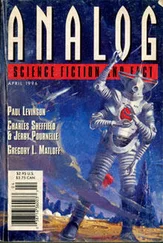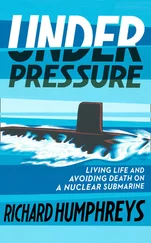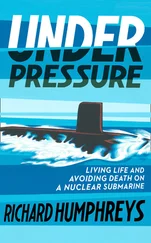Some people really know how to hold grudges. They are so adept at sulking that they can remain in that state not just for minutes or hours, but days, weeks, months, even years on end.
Next time you’re watching a sporting event, follow the competitors’ eyes. When an unfortunate incident occurs, they often look downwards, which can show they’re stuck in a ‘poor me’ loop, turning their attention inward. Or they may look upwards, questioning whatever higher power they deem responsible for the injustice. The origins of this type of ‘poor me’ behaviour lie in the attachment behaviour we looked at earlier. When the parent is well attuned to their child’s distress, they can provide comfort through non-judgmental facial contact and a soothing voice, but when the relationship is unpredictable or unresponsive, the child will come to associate their discomfort with a lack of eye contact. Later in life, when the same individual faces disappointment and discomfort the same pattern will emerge. The ‘poor me’ loop, and other negative content loops, are a deadly attention trap for performance. This kind of mental state doesn’t matter that much if we’re just going about our everyday tasks. But when we’re in a more demanding situation, it can become our sworn enemy. It sucks away treasured attention that we could be using to extract maximum information from our environment, solve problems or overcome obstacles.
Think about our golfer from earlier, feeling anxious as he takes the final shot in his first big championship. He might be focusing on where he wants the ball to go, but because his RED mind has taken over, part of his attention is also diverted to the water trap and where he doesn’t want the ball to land. He starts to worry about the water trap and a negative content loop is triggered. Out of nowhere, some self-defeating self-talk – ‘I’m going to miss the shot … I’m going to lose the championship!’ – and negative feelings – shame, frustration – seem to burst onto the scene.
His mind now contains images of two ‘targets’: the one he wants to hit and the one he doesn’t. And because he’s trying to perform while he’s split in two by doubt, his shot inevitably falls somewhere in the middle.
Cast your mind back to a recent performance moment when you lost mental focus. What diverted your attention in that moment? Did you get trapped in a negative content loop and partially fixated on what you didn’t want to happen? It was as if part of you was doing everything it could to defeat you in that moment.
You were caught in two minds.
For a head chef in a reputable restaurant, which is more important: having a laser-like focus on the food, or keeping an eye on her team, the supply chain, the wait staff, the table service and a long list of other factors? Narrow focus on food, or broad focus on the general restaurant situation?
The answer is that both are necessary. The head chef cannot afford to take her eye off the overall situation, and she most definitely cannot let substandard food pass. Both the overviewand the specific detailare required. One without the other would be a recipe for disaster.
Our actions should always take place within the big picture of what we are trying to achieve, which requires attention to context. At the same time, we need a narrow focus on the specific task we’re engaged in, which requires attention to detail.
While the RED mind can process many things unconsciously at the same time, the BLUE mind is linear, allowing us to concentrate on only one thing at a time. The head chef is intuitively aware of both the wider situation and specific tasks through her RED mind, but still consciously focuses on each in turn. It seems simple, but it works.
A dual focusrequires a tight, constant feedback loop between the overview and the specific task, with each informing the other. At any one time, our dominant focus will be on either one. The key is to move back and forth between the two, rather than splitting attentionbetween them.
Here’s a puzzle: dual focus and split attention both imply that our attention has to be in two places at once. So why does dual focus feed performance, while split attention starves it?
Let’s use an example to paint a picture of the differences.
Leo has just dropped a simple catch and gifted the opposition the upper hand in the closing stages of an important match. In the minute or so that follows, his mind goes back and replays the memory of his fumble and the moans of the watching crowd over and over. At the same time, he’s constantly looking at the clock and seeing the final seconds of the game tick by, and his mind keeps flashing forward to the devastation of his teammates in the dressing room after the game finishes. His attention is split between the present, past and future. His RED mind becomes hyperactive and he loses the capacity to think clearly. Mentally pulled in different directions, he becomes stuck – a deer in the headlights, frozen to the spot.
Now, imagine Leo is able to use dual focus to keep his focus in the present moment. He glances at the scoreboard and sees that he has two minutes left. He has the overview.
He then focuses on the immediate task, which is to help get the ball back in a coordinated team effort. The team have practised two-minute scenarios many times in training to prepare for this type of situation. He has the specifics.
He goes into dual focus – moving flexibly back and forth between the situational overview and his specific tasks – as the end of the game unfolds. There is a vague feeling of discomfort at the back of his mind that seems to be calling out, but he just accepts it and focuses his attention on communicating with his teammates. It’s time to hold his nerve, find his move and nail any opportunity to emerge, while maintaining a good RED–BLUE balance. In the final two minutes, Leo sets up teammates in good attacking positions three times. Although his team fall just short, afterwards Leo’s coach praises his ability to rebound from his disappointment and remain focused and engaged in the game.
Split attention divides attention in time and place; the different parts interfere with each other, and they all seem to occur simultaneously. Dual focus keeps the connection in the present moment.
Dual focus also trumps split attention because of the type of information being processed. When our attention is split, the diversion is inevitably about the negative meaning of a situation. Problems become jumbled up with solutions. When we have dual focus, we’re tightly focused on the process of completing our task (detail) while constantly reading shifts in our environment (overview). It’s about looking ahead without disconnecting from the moment.
I find that many people assume they already routinely use this two-level control of attention without any significant interference, when in reality they habitually fall into attention traps that lead them to think too much or too little.
Some fall for one-level attention, becoming preoccupied with either the overview or the detail, but not both. Having a single focus is simplistic: we will either miss shifts in the wider context and react slowly, or miss crucial detail in the specific task we’re working on.
Others add a third element to the dual focus and let themselves be diverted by a negative loop. Having a triple focus is too complex when it involves a RED mist that interferes with BLUE clarity.
Yet experts across countless fields have the capacity to switch their attention between perspective (the overview) and precision (the detail) when the heat is on. Skilful control of attention – avoiding negative content loops and maintaining their dual focus – is what separates them from the rest.
Читать дальше












